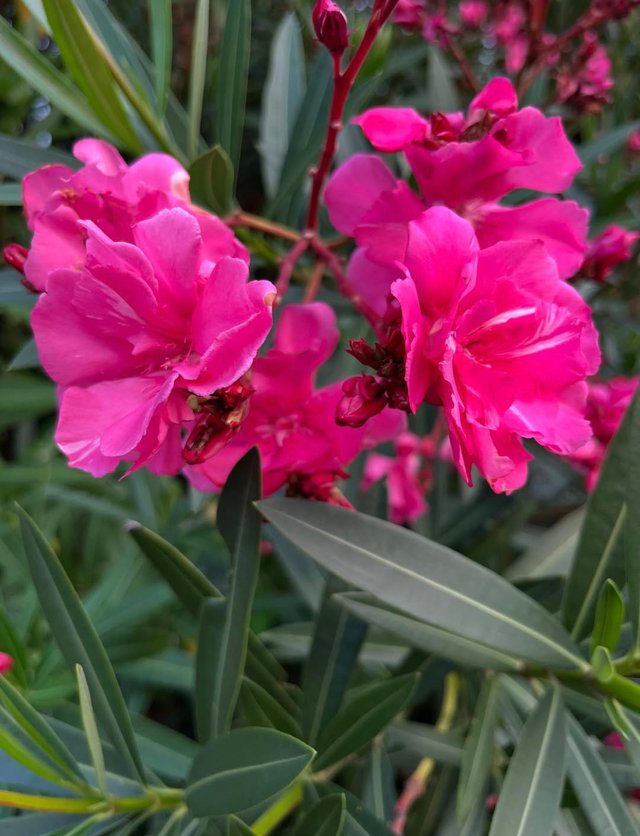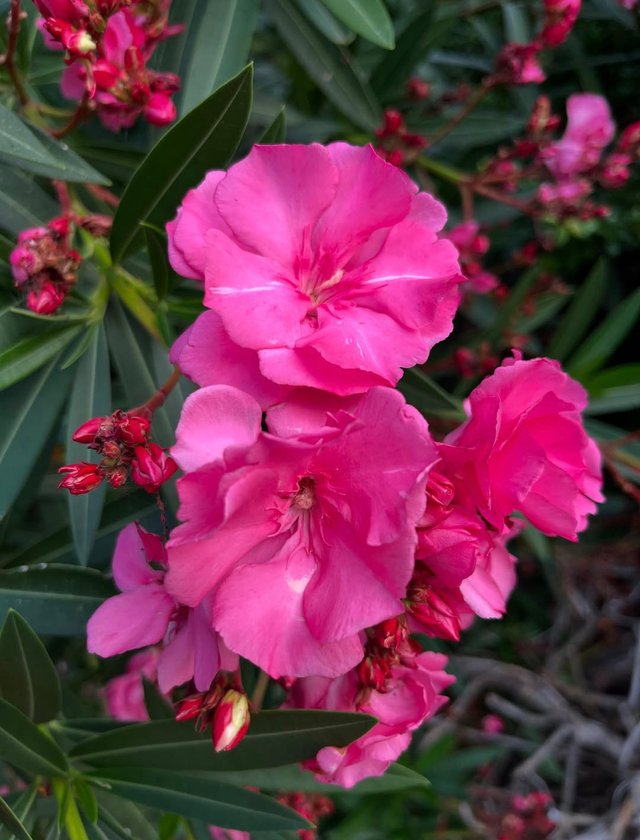Nerium Oleander
Nerium oleander, commonly known simply as Nerium or oleander, is a strikingly beautiful evergreen shrub or small tree native to the Mediterranean region and parts of Asia. Its vibrant flowers, glossy green leaves, and ability to withstand harsh climates have made it a popular ornamental plant in gardens and landscapes around the world. But beneath its elegant appearance lies a deadly secret: every part of the Nerium plant is highly toxic.
Nerium is a fast-growing, hardy plant that thrives in warm climates and can tolerate drought, poor soils, and even pollution. It typically grows between 6 to 20 feet tall, with a dense, bushy form. The leaves are narrow, lance-shaped, and leathery, often arranged in whorls of three.Its showy, trumpet-shaped flowers come in a range of colors including white, pink, red, yellow, and peach. These flowers bloom profusely in clusters during the warmer months, attracting butterflies and admirers alike. Thanks to its low maintenance and high visual appeal, Nerium is frequently used in hedges, median strips, and garden borders.
While Nerium oleander is stunning to look at, it is one of the most poisonous plants in the world. All parts of the plant—leaves, flowers, stems, seeds, and even the sap—contain potent cardiac glycosides, primarily oleandrin and neriine. These compounds can disrupt the heart’s rhythm and are potentially fatal to humans and animals if ingested, even in small amounts.Children and pets are particularly vulnerable, and even drinking water from a vase that held oleander flowers can be dangerous. Contact with the plant’s sap may also cause skin irritation or allergic reactions.




